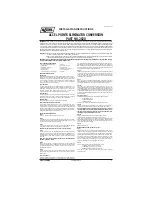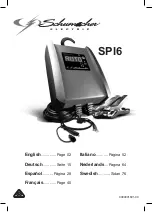
5-16
Driving your vehicle
Good Driving Practices
• Never shift to P (Park) or N
(Neutral) to any other position with
the accelerator pedal depressed.
• Never shift to P (Park) when the
vehicle is in motion.
Be sure the vehicle is completely
stopped before you attempt to shift
into R (Reverse) or D (Drive).
• Do not shift to N (Neutral) when
driving. Doing so may result in an
accident.
• Do not drive with your foot resting
on the brake pedal. Even light, but
consistent pedal pressure can
result in the brakes overheating,
brake wear and possibly even
brake failure.
• Always apply the parking brake
when leaving the vehicle. Do not
depend on placing the gear in P
(Park) to keep the vehicle from
moving.
• Exercise extreme caution when
driving on a slippery surface. Be
especially careful when braking,
accelerating or shifting gears. On a
slippery surface, an abrupt change
in vehicle speed can cause the
drive wheels to lose traction and
may cause loss of vehicle control
resulting in an accident
• Optimum vehicle performance and
economy is obtained by smoothly
depressing and releasing the
accelerator.
To reduce the risk of SERIOUS
INJURY or DEATH:
•
ALWAYS wear your seat belt.
In a collision, an unbelted
occupant is significantly more
likely to be seriously injured
or killed than a properly belt-
ed occupant.
•
Avoid high speeds when cor-
nering or turning.
WARNING
•
Do not make quick steering
wheel movements, such as
sharp lane changes or fast,
sharp turns.
•
The risk of rollover is greatly
increased if you lose control
of your vehicle at highway
speeds.
•
Loss of control often occurs if
two or more wheels drop off
the roadway and the driver
over steers to reenter the
roadway.
•
In the event your vehicle
leaves the roadway, do not
steer sharply. Instead, slow
down before pulling back into
the travel lanes.
•
HYUNDAI recommends you
follow all posted speed limits.
Summary of Contents for NEXO 2019
Page 550: ...I Index I ...
















































